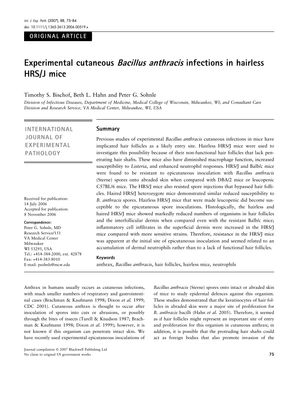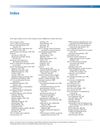Experimental Cutaneous Bacillus Anthracis Infections in Hairless HRS/J Mice
January 2007
in “
International journal of experimental pathology
”
hair follicles cutaneous Bacillus anthracis infections hairless HRS/J mice epicutaneous inoculation B. anthracis spores abraded skin leucopenic histological examination interfollicular dermis inflammatory cell infiltrate superficial dermis dermal neutrophils skin infections hairless mice skin inoculation anthrax spores scratched skin low white blood cells skin tissue examination between hair follicles inflammation upper skin layer skin immune cells

TLDR Hairless HRS/J mice resist Bacillus anthracis skin infections due to high numbers of immune cells, not because they lack hair follicles.
The study investigated the role of hair follicles in cutaneous Bacillus anthracis infections using hairless HRS/J mice, which have non-functional hair follicles. The research found that both hairless HRS/J and haired HRS/J heterozygote mice were resistant to epicutaneous inoculation with B. anthracis spores on abraded skin, compared to DBA/2 mice or leucopenic C57BL/6 mice. This resistance was also observed when spores were injected in a way that bypassed hair follicles. However, when HRS/J mice were made leucopenic, they became susceptible to infection. Histological examination showed fewer organisms in the hair follicles and interfollicular dermis of HRS/J mice compared to Balb/c mice, and an increased inflammatory cell infiltrate in the superficial dermis of HRS/J mice. The study concluded that the resistance in HRS/J mice to B. anthracis was due to an accumulation of dermal neutrophils rather than the absence of functional hair follicles.
